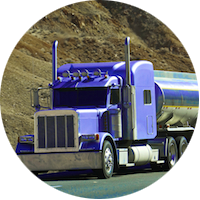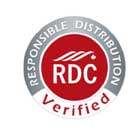Best Practices, Chemical Transportation, Hazmat Transportation
How to Calculate Carbon Footprint of Trucks and Shipments
I get many inquiries about how to calculate the carbon footprint of trucks and transportation. The problem is a fairly simple one to calculate. However, there is one variable that presents a problem. Fuel consumption. Fuel consumption is not constant. It depends on many factors like: age of truck, the general maintenance of the truck, the aerodynamic factor for the truck, if it was travelling up hill, or down hill, if it was a windy day, etc, etc. If your comfortable with an estimate: 6 miles per gallon is a good estimate of what a truck uses on average. Now, the rest is hard data…
Example #1: FULL TRUCKLOAD
Full Truck load Fuel Consumption: 6 Miles per Gallon
Miles travelled: 1000
Carbon per US Gallon of Diesel: 2.77 KG
= 1000miles/6mpg x 2.77KG per gallon
(please disregard the intermixing of imperial and metric. The transportation industry is still in imperial while the rest of us are on metric!)
= 461.68 KG is the Carbon Footprint of this shipment.
If you’re looking for a formula = 0.46 KG per mile travelled (based on a 44,000lb truckload).
Example #2 LTL:
LTL
Full Truckload = 44,000 lbs
Fuel Consumption = 6mpg
Miles = 1000
Shipment = 10,000 lbs
Carbon per US Gallon of Diesel = 2.77 KG
We know the total Carbon Footprint on this truckload is 461.68 KG from the previous calculation and that a full truck carries 44,000 lbs. So, 461.68 / 44,000 = 0.0105 per pound. Multiply by 10,000 lbs
= 104.93 KG of Carbon for this LTL shipment.
If your looking for a formula = 0.0105KG per pound/1000 miles = 0.00001 Kgs per pound/mile
=0.00001x POUNDS x MILES
Note: Because LTL densities can be different you will have to change the formula based on how much of your product fits in a truck. For example: if you were shipping pillows and a whole truckload of pillows weighed only 10,000 lbs. You would have to adjust the calculation I just did above accordingly.
About Author
Comments are closed











